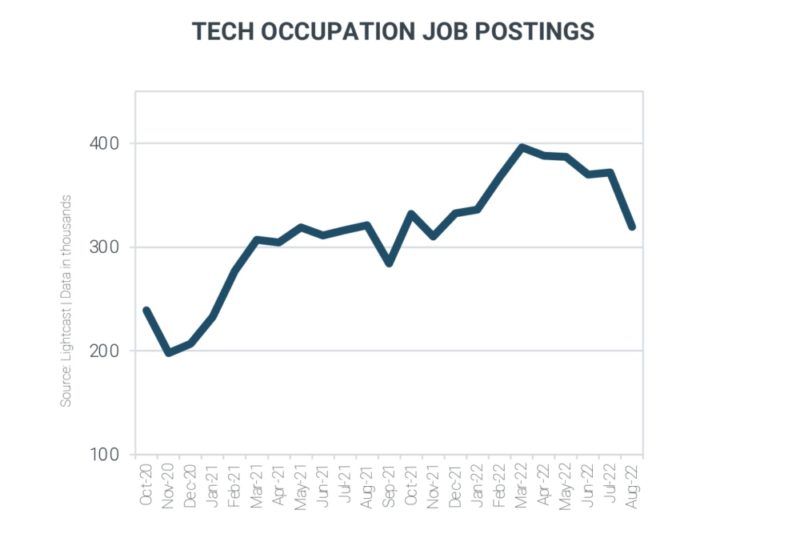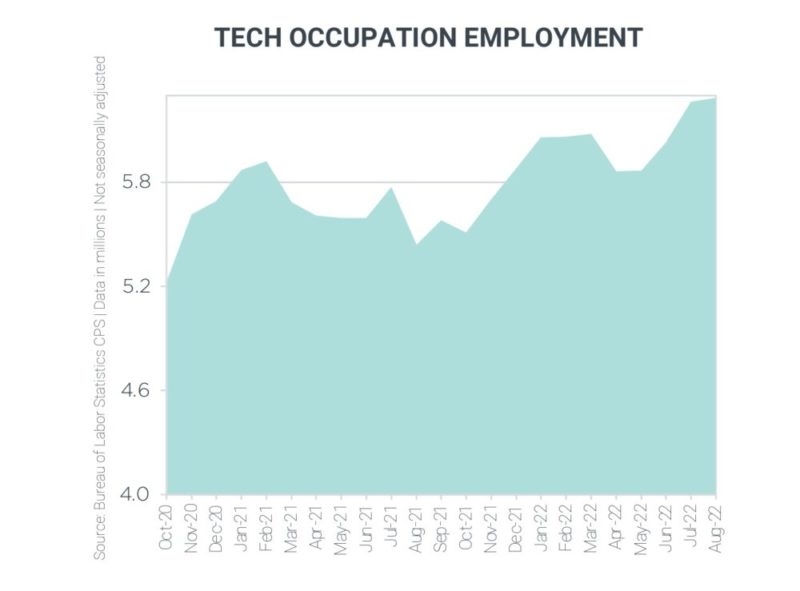Written by Technically Media CEO Chris Wink, Technical.ly’s Culture Builder newsletter features tips on growing powerful teams and dynamic workplaces. Below is the latest edition we published. Sign up to get the next one.
In other words: Resist hiring or retaining a weaker performer in your company, even if they keep you comfortable as a manager.
But those B players might be looking a lot more valuable in a stubbornly tight labor market.
That’s the thinking behind what economists call “labor hoarding” — the tendency for employers to limit layoffs in any forthcoming economic downturn because the memory of the pandemic hiring crunch is so recent. Better to dull short-term profits than miss out on the resulting economic rebound because of a labor shortage.
The numbers back that story up. Though rounds of tech layoffs have been announced and giants like Amazon have frozen corporate recruiting efforts, overall job terminations remain low. Maybe we’re still early in the slowdown, or maybe labor hoarding marks a real shift in how employers think.
That could help explain confounding economic data. The American economy added 263,000 jobs last month, according to Friday’s release from the U.S. Bureau of Labor Statistics. That’s a stubbornly high number, albeit one that’s part of an ongoing slowdown that the Federal Reserve Bank has anticipated. Today’s labor market is still competitive for college graduates — so, congrats Millennials, you really can complain about graduating worse off than your Gen Z counterparts.
Quit rates and job openings remain historically high, and layoffs are still slow. That’s where labor hoarding comes in.

Tech job postings have risen and fallen over the past two years, but dropped significantly between July and August 2022. (Courtesy image from CompTIA Tech Jobs Report)
Companies are hiring less, even if they are holding more. The number of job vacancies shrunk last month. Even economy-leading tech hiring is slowing. The number of tech job postings in September was at the lowest point since last year, according to CompTIA’s monthly jobs report.
This dynamic is playing out across the United States. Tech job postings in major states like New York, Texas and Massachusetts are shrinking; in California, they were down a third between July and August. Each of the 10 US metro areas with the largest number of tech openings saw its respective total number shrink. The vacancies also ticked down in big Midwest states like Illinois and Ohio, the latter of which funded a report by McKinsey to champion its tech growth.
All those slowdowns came off historic highs, though. It’s conceivable that the cooling doesn’t have to be brutal. New job postings are plummeting, which contributes to slackening demand for talent. Though salaries don’t go backward, their rate of growth can cool. Still, as of yet, there hasn’t been an outsized change in the size of the tech workforce.

Tech employment since Oct. 2020. (Courtesy image from CompTIA Tech Jobs Report)
It’s a perfect example of labor hoarding. Perhaps more companies are holding onto those B players.
Sign up for the Culture Builder newsletterBefore you go...
Please consider supporting Technical.ly to keep our independent journalism strong. Unlike most business-focused media outlets, we don’t have a paywall. Instead, we count on your personal and organizational support.
Join our growing Slack community
Join 5,000 tech professionals and entrepreneurs in our community Slack today!

This Week in Jobs: Fall from the coconut tree and check out these 22 career opportunities

Gen Z pivots to gig jobs instead of full-time work: Who is that good for?

Baltimore Money Moves: Under Armour to pay out $434M in class-action settlement


